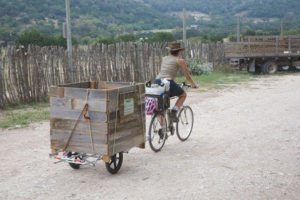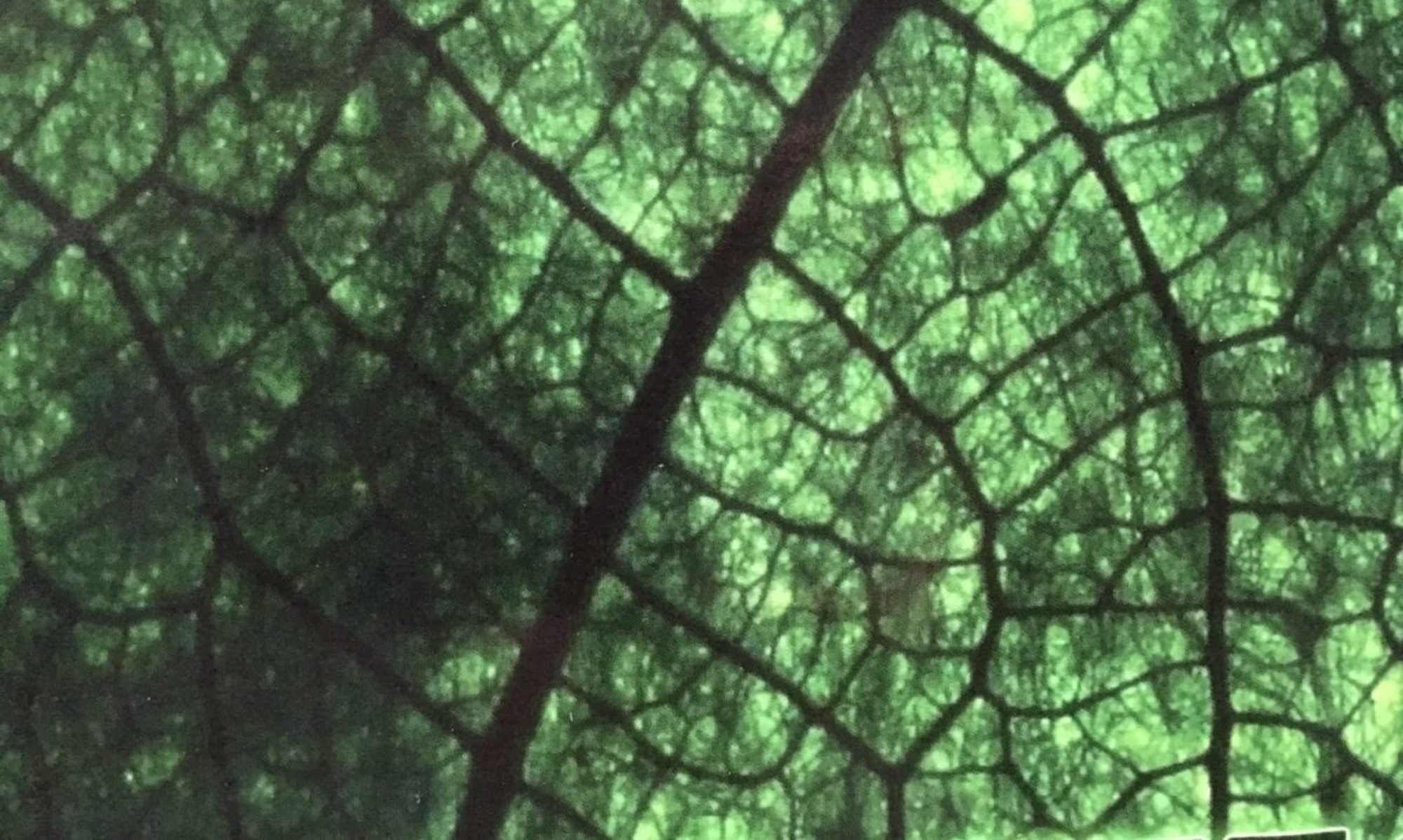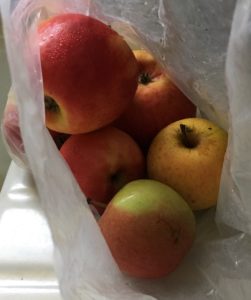
People tell me all the time (both verbally and silently, through their manner) that I’m extreme. Extreme for not owning a car, and for choosing to get around mainly by foot and bike. Extreme for not using air-conditioning or heat. Extreme for choosing to stay clean by taking baths in the ocean rather than firing up a hot shower several times a week. Extreme for bringing my own reusable dishes and utensils to a neighborhood association potluck. Extreme for not accepting rides that are out of someone’s way; for refusing to buy produce wrapped in plastic. For trying to get folks to stop throwing food scraps into the trash-can (rather than the compost where they belong). For even mentioning the concept of “compost” in a polite middle-class setting. For getting seriously upset with myself when I forget to tell the bartender “No straw please,” or when I leave my to-go container at home and end up walking out of the restaurant with my leftovers in a styrofoam box. For buying two vintage bird ornaments for $9 at a thrift shop, when I could have bought a whole pack of 10, new rather than used, for a dollar at the Dollar Mart. Yes, a lot of people I meet do think I’m extreme.
But do you want to know what’s really extreme? Being in the midst of a global crisis that makes World War II look like a cakewalk, and yet not being willing to implement rationing and conservation as we did so willingly for a war effort. Allowing our most beautiful, precious, life-giving forests and wetlands to be excavated and poisoned by fracking because we are not willing to cut back on our energy use. Having cancer epidemics in communities near fossil-fuel extraction areas. Having our water poisoned by mine tailings, our aquifers drained by heedless consumption. Having birds stay up chirping all night because our streetlights are so bright that it doesn’t get dark enough for wild creatures to live normally. Having our own hormones and sleep patterns disrupted by over-bright street lighting, and still keeping those lights blazing. Having even that most life-giving function, food production, be violent: mono-crop agriculture degrading the soil and yielding nutrient-deficient produce; animals treated without regard to their existence as sentient beings. Having billions of dollars, and who knows how many gallons of fossil fuel, mindlessly deployed for the “vanity agriculture” of tidy lawns. Having buildings that are designed for the windows always to be closed; buildings that go moldy and toxic without constant climate control. Having people need to bring jackets and space-heaters to their offices in summer because of the excessive air-conditioning. Having such endless demand for oil, that we are poised to begin seismic blasting undersea to prospect for oil, creating a level of noise that will impair the ability of our beloved whales, sea turtles, dolphins and other marine life to find food and communicate with their families. Homeowners’ association rules that not only encourage, but actually mandate, practices which deplete the soil, poison the aquifers, consume huge amounts of water, kill pollinators, and destroy wildlife habitat.
Just a short list, for starters off the top of my head, of things that are truly extreme in our world. The everyday, business-as-usual default setting that we don’t even question: Now that is extreme.
If we want to survive, let alone thrive, on this planet, we really need to start redefining “extreme.” What do you think?
• Further Reading: Seismic blasting disrupting marine life: “It seems harder and harder each day to find peace and quiet, doesn’t it? Cars angrily honking as traffic rushes by … all the while our phones endlessly beep, ring and buzz. It feels like constant noise is the new normal. Sadly, even marine mammals can’t escape our noise. Right now, Big Oil wants to perform seismic testing to find where new pockets of oil could be found and then drilled. … Thanks to the Trump administration, Big Oil can move forward with this dangerous plan to allow seismic exploration for oil and gas in our ocean. And they have permission to knowingly harm over 30 species of marine life, including sea turtles, fish, dolphins, and the North Atlantic right whale, one of the most endangered species of marine mammals in the world!” To learn more about this and other crises affecting our oceans (and therefore affecting all of life on earth), visit The Surfrider Foundation website.
• Action Item: The Surfrider Foundation is suing the federal government for violating the Marine Mammal Protection Act, the Endangered Species Act and the National Environmental Policy Act. You can help by making a donation to help stop seismic blasting to test for undersea oil deposits.
• Video message from the Weather Channel: “Why are there so many science-deniers? Do you just not want to admit to yourself that this is real because it’s scary? Do you just want to deny it because you have investments in land, oil and gas? I don’t understand. Yes, climate change happens naturally, but the evidence for human-accelerated climate change is irrefutable. There is a worldwide consensus among climate scientists, as well as scientists in related fields, this this is REAL and it threatens all of us. Take a look at the models, listen to the experts, view the effects. Listen to science and reason. We, as humans, are powerful. And we have the power to improve our outlook by shifting our investments and focus toward sustainable energy and new technologies. We can brighten the outlook of the future. It just starts with knowledge and a willingness to listen, learn, and accept. Then we can move forward. We’re all in this together.”
• Today’s photo: The photo at the top of today’s post was taken at the 2007 Natural Building Convergence at the Quiet Valley Ranch in Texas. Quiet Valley Ranch is also the home of the Kerrville Folk Festival, an 18-day music festival whose mission includes a permaculture education component. I built this compost box out of scrap wood and transported it on my Bikes At Work trailer to the composting site above the festival staff kitchen. Many people might call that extreme, but for me it was just a wonderful way to have fun, build my carpentry skills, and educate the public about composting!

